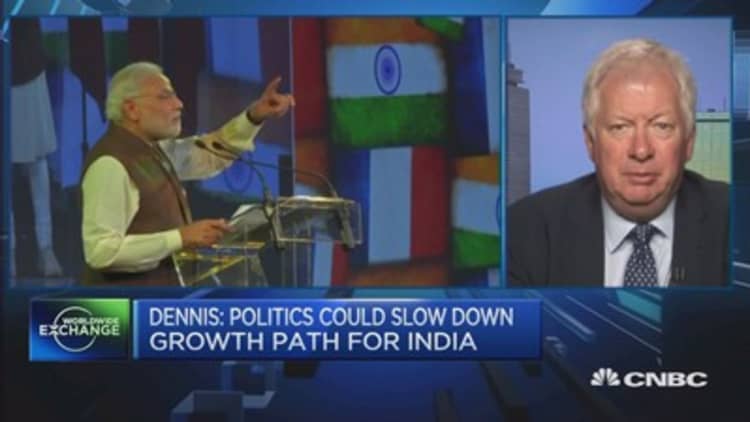The is no longer the darling of emerging market (EM) currencies as policy disputes, the rebound in oil prices and actions by the Reserve Bank of India (RBI) threaten to reverse its strong run earlier this year.
"The Indian rupee (INR) has long been one of our preferred currencies in the broader EM FX context... But local and global challenges are rising against the INR," HSBC said in a report on Tuesday. The bank has now revised its year-end forecast to 66 per dollar, from 63.5 previously.
Stalled reforms and tax fears are among the major obstacles for the currency. This week saw the rupee slide back to levels not seen since mid-2013 against the dollar after two crucial bills - the goods and services tax (GST) and land acquisition act - failed to pass in parliament due to resistance from opposition lawmakers.
Meanwhile, fears that foreign portfolio investors will be included under the minimum alternative tax (MAT) resulted in outflows of 2.1 billion from April 217 to May 8. The MAT is a form of taxation that has only applied to domestic firms in the past. The magnitude of outflows is the largest since 2013's 'taper tantrum' period and marks a stark interruption to India's steady stream of inflows over the past 20 months, HSBC noted.
As a result of such policy battles, other EM currencies could benefit at the INR's expense.
Read MoreIndiato be top economy by 2050
"EM Asia is witnessing a broad-based decline in the FX space so the currencies that stand to benefit are actually outside the region, like Brazil and Russia. Outflows from India could head there just because investors have shunned those markets recently," said Khoon Goh, senior FX strategist, at ANZ.

Lower oil prices last year were a blessing for India's oil-importing economy, helping to reduce New Delhi's high energy bill. However, Brent crude's 13 percent gain in the past three months to around $67 a barrel has sparked worries that recent improvement in India's external balance could slip.
But JPMorgan believes India can handle oil around $70.
"40 percent of EM Asia exports, including India, go to other EM countries, which are mostly oil exporters. There was no demand coming with oil at $45, but oil at $70 actually adds to that demand. India will only feel the pinch if prices go back to $100," Jahangir Aziz, the bank's head of EM Asia economic research, told CNBC.
RBI reserves in question
The currency's outlook is especially threatened by the prospect of the RBI increasing reserve adequacy, HSBC added. The central bank typically only buys dollars to prevent sharp currency appreciation.
"While the current account deficit stays narrow and ahead of potential global headwinds from the expected tightening of monetary policy by the Fed, the RBI has a rare window of opportunity to build reserves and will likely persist in doing so...This highlights the present asymmetry in FX policy."
Of course, HSBC's call is contrarian since most analysts believe such a move would be extremely unusual. In fact, ANZ's Goh's isn't overly bearish on the rupee since he expects the RBI to take action and sell dollars to stem the rupee's losses.

